About Vintage Home Movies section
All about Vintage Home Movies. Why it is here and how to get the best from it.
Welcome to the Vintage Home Movies section of Everything Vintage, which is a sibling to the Photos section of the site
Aim of the Vintage Home Movies section
The aim of the vintage home movies section is to provide an online home for 8mm (predominantly) vintage home movies which were taken by amateur photographers and cinematographers as family records of holidays and major events in their lives. These films were taken in their millions between the 1930s and the 1980s until they were replaced by, initially videotape and latterly by the smartphone in everyone’s pocket.
Because they form a vast library of social history, and also because I’ve been collecting these films for the last couple of years, I’ve decided to digitise them and where appropriate publish them on this site.
Why collect Vintage Home Movies?
So what is the appeal in collecting and publishing these old films? Well, for me there are several attractions to collecting 8mm vintage home movies.
Historical Significance
First there is the possibility of finding something rare and historically important. Since these films were taken by amateur photographers and film stock was expensive, the films tend to be of events which were important to the people involved. These days we can all take video clips at anytime on our phones, but 50 years ago taking a cine film was an important investment of time and money so most people weren’t shooting film every weekend.
Although it is unlikely that a film will turn up as important as the Zapruder film, it’s not impossible that something will emerge which shows some event in history from a different angle or throws some new light on a subject.
Interestingly I’ve found a few films in the content on this site which meet this criteria; far more in proportion to the content than I’ve found in the Photos section (which covers still photos). I suspect the increased cost of movie film meant that people really did only use it for particularly special events.
Detective work
Another real attraction for me is the detective work involved in trying to place films geographically and in their correct time frame. These days digital images and video are time stamped so we normally know exactly when they were taken and are often geotagged as well, giving a precise location. With vintage films this isn’t the case and the only clues which point to the age and location are either notes, written on the box, or the actual content of the film itself.
Quite often the notes on the box or reel, if there are any, are not very helpful in locating the places shown in the film. Remember, the notes were written to help the photographer locate a particular film when they had their projectionist hat on. The most common form of note is one which says, ‘Mary and Alex Wedding’, which easily fulfils the requirements of the owner, but doesn’t help us locate the church where the wedding took place.
However, I find it fascinating to try to find out as much information as I can about a reel of film which is otherwise unknown. Normally, this means scanning the film for any landmarks which could be found with a google image search, or looking at street names etc. This is not helped at the moment by the poor quality of the scanner I’m using, but I hope to enhance this soon which should help.
Of course, the easiest way to locate landmarks in the films is by recognition, and this is a way any viewer of the site can also help – if you see something in a film that you recognise, or anything that gives you clues as to the location or event which is taking place please use the comments box below the film to let me know. The other way to assist is to share posts on social media and on any site which may be relevant – the more eyes that see the films the better the historical data we can build up. So if you can help in this way, please do – this site is meant to be participatory.
Regarding the date a film was taken, unless there is a date written on the film box, it is really a question of observing the fashions the people are wearing, the style of the cars and other vehicles and looking at other objects in the film to try to form an opinion as to when the film was shot. Sometimes there are items of technology which can put a lower bound to the date – for example in one film I watched recently a man was using a 110 format camera. Now 110 film was introduced in 1972, so I know the film was shot on of after that date.
Social History
Another reason I find vintage home movies so fascinating is the social history angle; It is interesting and nostalgic to look back on normal day-to-day life as it happened all those years ago and contrast it to life today.
At the time they were taken the events shown in the films on this site would have been important only to the people who took them but now they could well also be interesting to other people after the passage of 50 odd years.
It also for me conjures up the thought, ‘I wonder how the people shown in these films would react to the idea of being seen by a potential audience of millions, 50 years after they appeared in their home movies’? I suspect it would have been unimaginable for them to understand that thought in the same way that it would be impossible for us to understand the technology that will be available in 50 years from now.
Film Quality and Length
Just a note about the quality and length of the films on the site.
Because they were taken on a variety of different cine cameras and by amateur photographers of differing technical ability, the quality of the images varies quite widely. Some films are extraordinarily good and could have been taken by professional cinematographers, others are poorly exposed and poorly composed.
It’s also true to say that 8mm film, especially standard 8 with its smaller emulsion area, does not produce image quality of the sort we are used to seeing these days1.
The other factor when it comes to the quality of the films is, of course, how well they have been stored over the last 50 years. Many of the films will not have been shown for perhaps 40 years and if they have been kept in damp conditions the emulsion can deteriorate quite a lot.
Most of the films on vintage home movies are quite short in length by modern standards.
This is because a standard reel of film was 50 ft long which lasted about 4 minutes and was fairly expensive. Although some keen amateurs would shoot longer films using several reels, for most home moviemakers a single reel was probably all they could afford to shoot.
I remember my father would only ever be able to afford a single reel which he would use over the course of a trip to the beach or on holiday for example.
Which vintage films are published?
The basic criteria for whether films are published or not is how interesting I believe them to be to either myself, or to anyone else who might watch the films on the site.
There are films which are taken in famous places or interesting tourist attractions and these films are quite often interesting because they highlight the changes that have taken place since the films were shot. An exception to this would possibly be films which concentrate highly on just scenery; much of this would look very similar if shot today.
There are other films which just show normal daily life – the social history films mentioned above. Although these would probably not have been very interesting to anyone other than the people who featured in them at the time they were taken, they can now be immensely interesting because of the contrast with the way we lead our lives nowadays.
Who is vintage home movies’ audience ?
After the films are digitised and converted to video clips they are posted to the site to be available to anyone who wants to see them. Who is that likely to be?
Well I can imagine several groups who may be interested.
For a start there are social historians or anyone researching an historical topic which involves a social history element. It sounds pretentious to say at the moment that the site will become historically important, but eventually, with enough content that will be the natural result.
Then there are the nostalgists amongst us, and I count myself in that group. It’s a fact of life that once you reach a certain age you tend to look back fondly on memories and watching these sort of films, especially if your family used to produce 8 mm films, can bring those memories back.
Then there will be a group of people who will be interested in a particular film because it covers a subject they are interested in. For example, a few days ago I published a film of the Tiger Club, which is a vintage aeroplane flying group. Anyone interested in biplanes would probably be interested in that post.
How is content organised?
With more content being added all the time you may wonder how you can find any particular film which might interest you?
The main site menu has an option called ‘Films’ which consists of a comprehensive listing of the different categorization of the films on the site.
If you would like to see the films in the order they were added to the site use the menu option called ‘Browse films’.
As well as the browse option, all content when it is added to the site is assigned a value for each of a number of special categories. These cover
- the decade the film was shot if known, or my best guess if not
- the type of the film emulsion i.e. Kodachrome or Agfa etc
- the general location the film was shot in i.e. the country
As more content is added some of these categories will expand. For example the location may narrow down to individual cities or regions when there becomes enough content to make that worthwhile.
Each of these categories are represented in the main menu at the top of the site. Any selection from these menus will present an archive of all the material on the site in that particular category for browsing.
As well as these specialist categories, there are also categories which are used to group the films by their subject matter. At the moment there are 9 different subjects which are again present in the menu which can be selected and present an archive of all the films which match that subject. Again because there are a limited number of films on the site these subject areas are pretty broad and may become narrower as more content is added.
Searching for Films
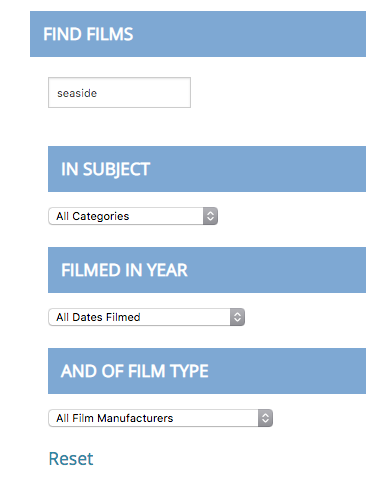
If there are specific things you are looking for you can also try the search form from the main menu under the heading Find Films.
To use this form just choose any of the items from the drop down lists and if you want add a search term to the text box at the top of the form.
You don’t need to press enter, as you make a selection the main page will update with the results which match your selections and apply and ‘AND’ condition between them. This means if you select ‘Films from the 1960’ in the ‘Filmed in Year’ box and then choose ‘Kodachrome’ in the ‘And of film type’ box the results will only be films which meet both those conditions.
In the image on the right you can see I was searching for all films which use the work ‘seaside’ somewhere in the text.
Using this search box and the menu items you should be able to find just about anything which you would find interesting.
Finally, when there is a large archive of film and I’ve seen patterns of particular subject matter repeat, I’ll start tagging films which will also lead to an archive which covers a particular subject or topic.
If you want to be kept up to date when new vintage home movie content is posted, then please consider subscribing with the form in the sidebar or by visiting this page.
- Although at the time it was popular the tiny 8 mm transparencies were being projected onto a screen far bigger than the size shown on this site [↩]
Discover more from Everything Vintage
Subscribe to get the latest posts sent to your email.

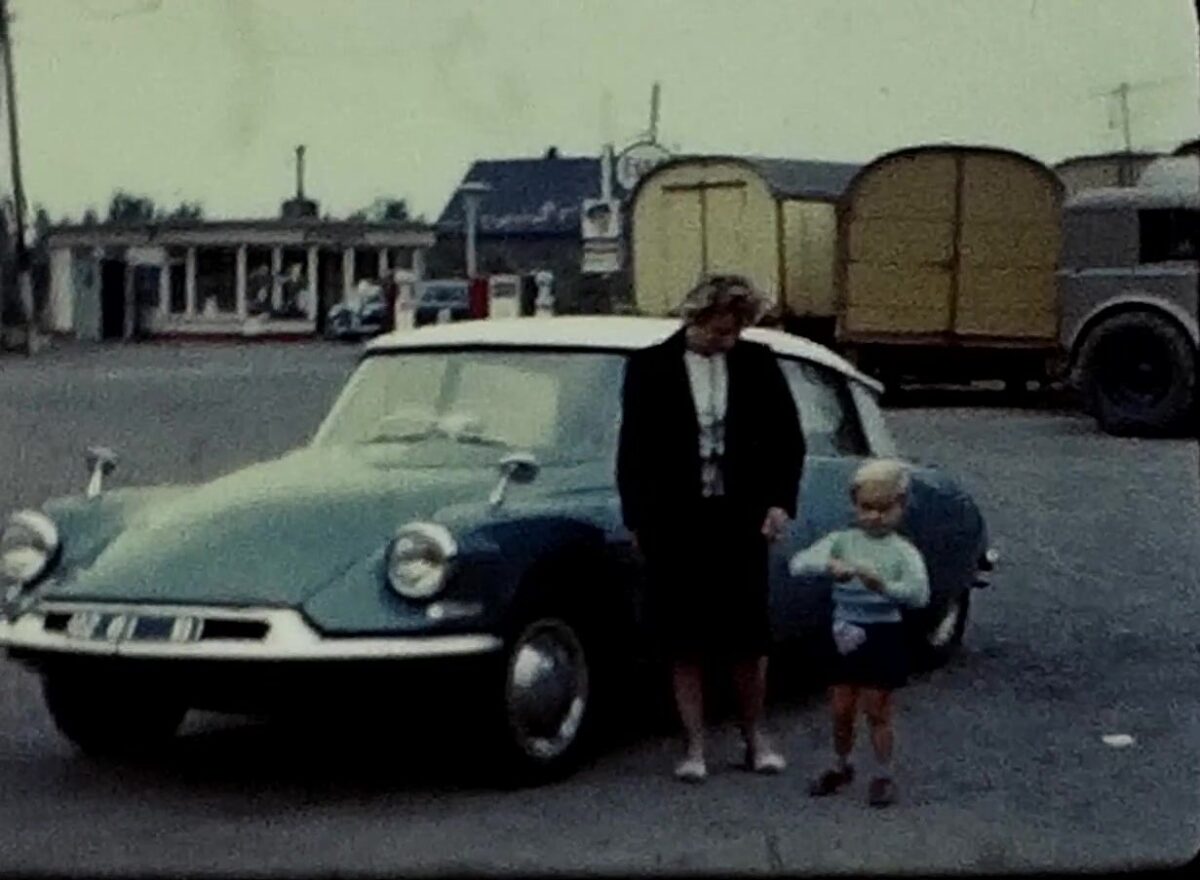
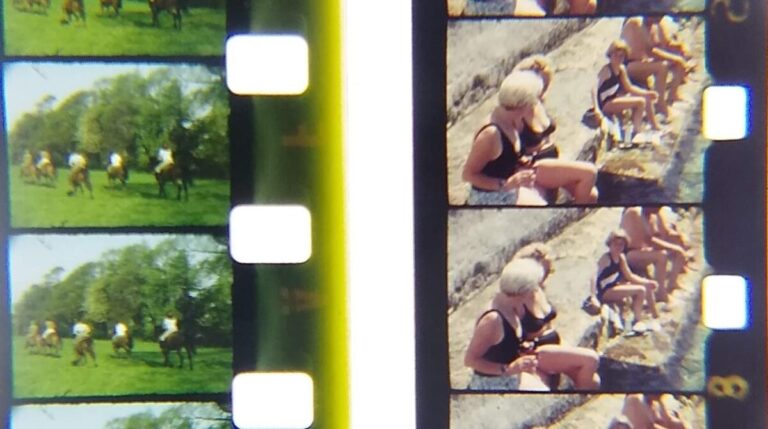
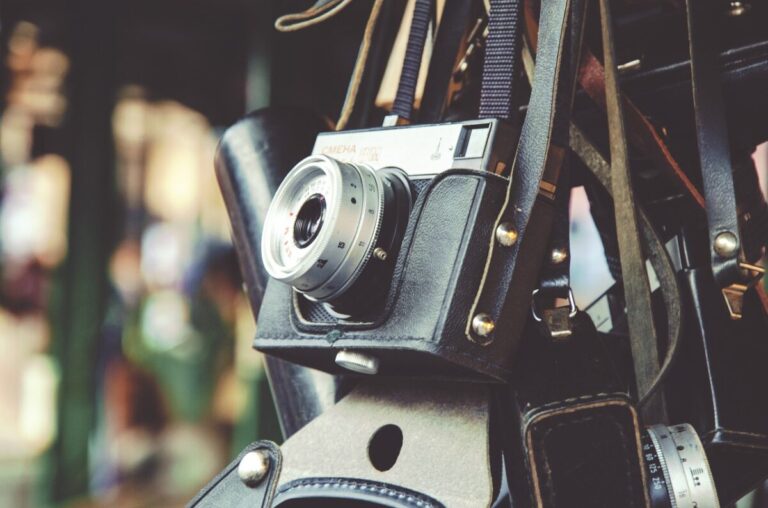
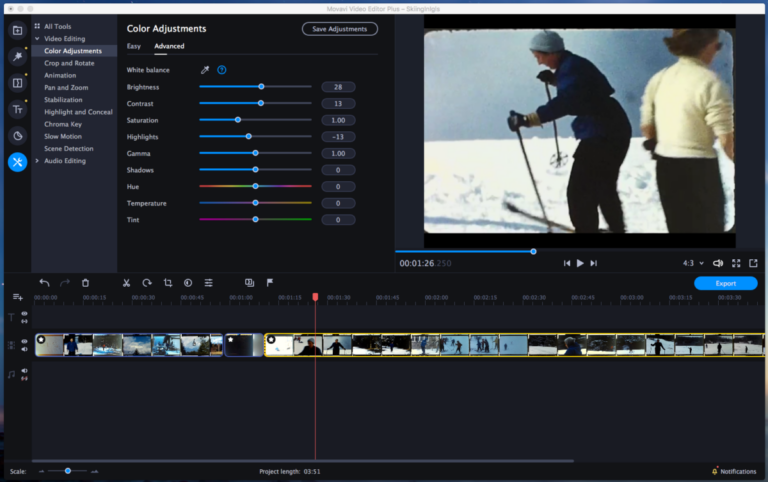
[…] majority of the film shows a cruise on the rhine and includes several landmarks which make identifying the location quite easy. The simplest place to locate is at about 3 minutes into the film, when there is a sequence which […]
[…] I find this film interesting from a social history point of view. […]
[…] a social history point of view it’s interesting to see the people, hairstyles and fashions as well as the landmarks in this […]
[…] Anyway, whatever the back story, I find the short film interesting to watch. As well as the lorries, there are some interesting old cars in the film and I also found it noticable how little traffic there was. Although not of significance historically, I find this post really interesting from a social history point of view. […]
[…] Although this ceremony is not of huge importance, it is nonetheless quite interesting and for scholars of military history must be of some historical significance. […]
[…] which gave me the clue as to the location and I assumed the film was all taken in Vianna, but after some research it turns out the start of the film was shot in […]
[…] Since the model village in Ramsgate closed down in 2003, I classify this film as one of those on the site which, although not historically important, is still significant. […]
[…] notes on the box were the starting point in my detective work trying to find the exact location and I found the road, Dentons Green Lane which appears in the […]
[…] on the plastic reel cover that protects the film which means I didn’t have to carry out any detective work to find the […]
[…] military band playing and marching up the street towards the photographer. In my detective work to locate where this film could have been taken I tried to read the street signs in this sequence […]
[…] admit I did a lot of google searching in my detective work whilst trying to find out where this film may have been taken. I tried multiple image searches […]
[…] This was confusing because just after the memorial, the boat trip resumes. It was only after some google research that I found there is a memorial in this country at Runnymede (which is near the river Thames and […]
[…] to sea through some rocks which I think may be near Peninnis head. At least, that rock came up in my search for locations on the Islands where the film could have been taken, and I think there is a […]
[…] I saw that feature which I recognised, there was almost no other detective work needed because the rest of the film is obviously taken in the same area. The date is not actually a […]
[…] site which I’ve outlined in the ‘Welcome to Vintage Home Movies’ post, namely the Social History aspect of old home movies. I find this sort of movie interesting because of the contrast it paints […]
[…] did some google detective work to try to find out where this film could have been taken. When I did a search for Charlestown […]
[…] site because it seems to fit into the social history aspect of the site’s main aims, as I explained in the Welcome and about post. By this I mean that if we look past the obvious disruption of a move, it is interesting to see the […]
[…] was no real detective work needed to find the location and event this film depicts because the reel has written on it, […]
[…] I did a bit of detective work trying to find where this film was taken, I couldn’t find any signs or clues which allowed me […]
[…] of the fun aspects of watching old vintage home movies is the detective work needed to try to find out locations and events shown in the films, but in this instance I’ve […]
[…] About Vintage Home Movies […]
[…] is not much detective work I can do to try to find out where the action in this film took place. Other than at the very end, […]
[…] although it was easy in my detective work to find the fact that this was taken at a zoological garden , it wasn’t easy finding the […]
[…] date of Nov 1958 which is why I can be fairly certain of the year. It didn’t take much detective work to determine the season the film was taken in; the opening scene shows bluebells in a forest […]
[…] detective work to try to find the location of this film had been completely unsuccessful until I saw the very last […]
[…] order to find the date and location of this film I didn’t need to resort to google, as I normally would. The clues are in the film itself written on the sides of the floats as they […]
[…] had to do very little investigation to find where the first destination in the movie was since the film shows the name board for […]
[…] I first watched the film I was looking for clues as to the location and to be honest wasn’t getting very […]
[…] Pavilion at Brighton which clarifies things. This has helped because it minimized the amount of detective work I needed to do to find the […]
[…] did a bit of research to try to find where the film had been shot, because the only information written on the […]
[…] hosts some very popular events, I decided it should be published. Although probably not of historical significance, it should still be […]
[…] it came to identifying the location this film was taken in, it turned out to be quite easy because there are several clues as the film […]
[…] was possible, with a bit of detective work to find out that the ship shown in the film is the Lloyd Triestino Africa, although I had to do […]
[…] this way and I’m not criticizing him for it, I’m just trying to show the historical and social history aspects which have been captured in the […]
[…] The box the film was packed in had no markings to describe where the film was shot, although it did have the date 1957 marked on it. In order to find the location of the film I needed to do a bit of detective work. […]
[…] described as ‘1950s 8mm home movies’, and I knew I would find them interesting as a social historian. Because of this, I paid just over £22 for all the movies, which amounted to about 23 […]
[…] of this film, it was shot on Kodachrome, standard 8 film in 1961 and the first part I identified during my detective work was taken in the city of Dusseldorf in […]
[…] a bit more about the balloon which was being launched, but, as is the case with many 8mm films, the definition is not good enough with my present scanner to read the writing on the balloon. It’s possible that it was a […]
[…] detective work to try to find where and when the film was taken, I’ve been completely unsuccessful and have […]
[…] it came to detective work to find out what was going on, there wasn’t too much necessary to find the location, because […]
[…] to find out that the language was Italian. Once I had that piece of information I continued my detective work to try to find the location of the ruins and Pompeii seemed to be the best fit, but I […]
[…] When I watched the film, other than the obvious age of it the other thing which struck me was the scene where the mother puffs smoke at her baby to startle it. A completely innocent and amusing action at the time but one that would be definitely frowned upon today and quite a lesson in social history! […]
[…] or ‘IOJ’ associated with it, i.e. ‘I0J conference Malta 1971’. I did a google search for this phrase but couldn’t find any information about it although there were several bodies that have those […]
[…] in this case, certainly from the first half, there is almost no detective work needed to find the location because it’s a building which would be recognised around the […]
[…] whatever the ceremony the film is still interesting from a social history […]
[…] wasn’t much detective work necessary to find the date of this film because it starts with a nice title sequence which says, […]
[…] terms of detective work to find out the location and date of this film, I didn’t have to resort to Google because the […]
[…] growth and is not as clear as it would have been when originally shot, but since it seems to be historically significant, I thought it met one of the criteria for inclusion on the […]
[…] properly labelled to say exactly what the contents of the film is, so there was no need to do any internet searches or detective work to find out what is […]
[…] of the known location and date I didn’t do much detective work in trying to find out too much about the film, but I did google for Harry Cody’s Circus since […]
[…] noticed a long shot of a man-made weir or waterfall in the film, so I tried to do some internet research to find out where this could have been taken, but unfortunately I couldn’t find any images […]
[…] didn’t need to do any real detective work finding the locations shown because they are actually recorded on an index page inside the plastic […]
[…] picked up by aeroplane for, I assume, the journey home. The plane registration is G-AHKU, and as part of the research I did to try to find some information about this film I discovered this site which gives a bit of […]
[…] Anyway, the film itself is about 100ft long and supplied on a Dixons 5 inch reel in a plastic two part cover. On the cover someone has written a small note which says, ‘River Trip Rhine and Cologne, 1960s?’. I suspect that the question mark means that the original photographer didn’t write the note, so I’m going to stick with my estimation that the film was taken in the 1970s rather than the 1960s. The note was helpful in identifying the location in the film however, and meant I had to do much less detective work. […]
[…] film was taken on Kodachrome standard 8 film stock and is about 300 feet in length on an aluminium […]